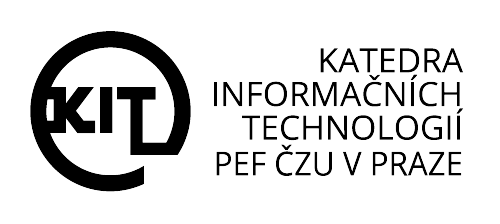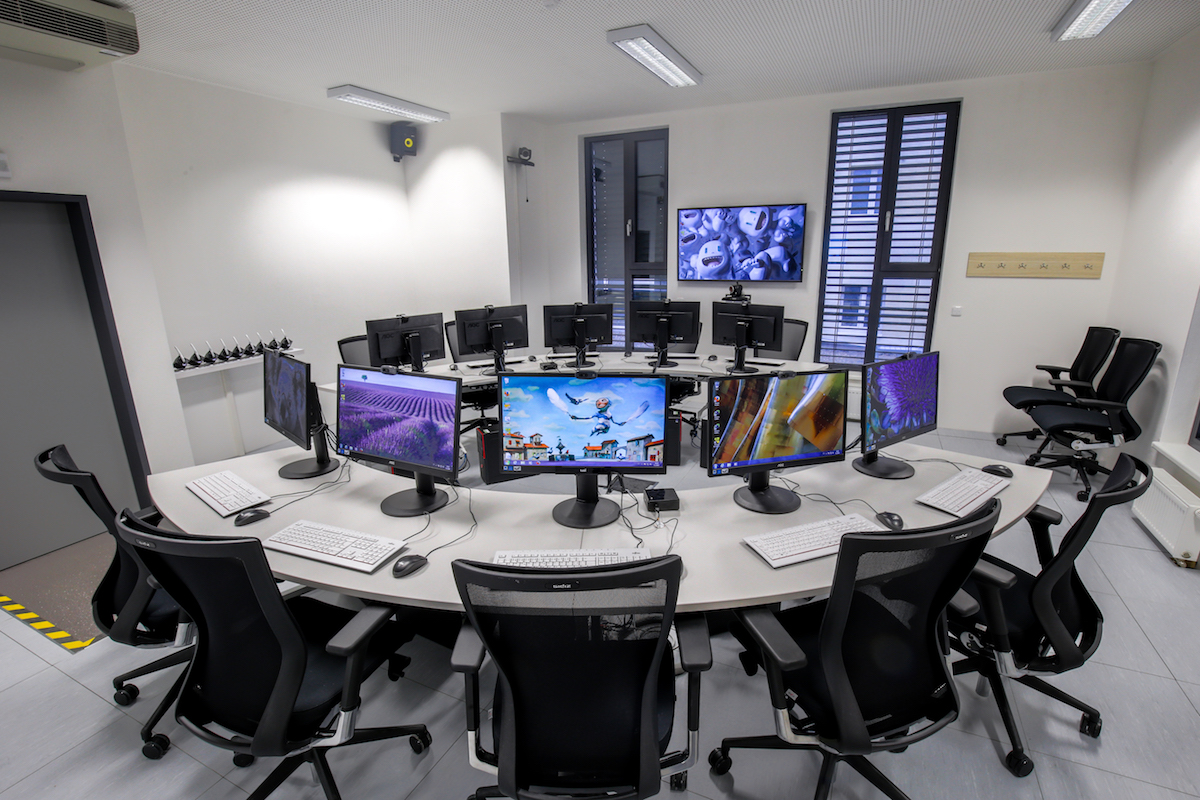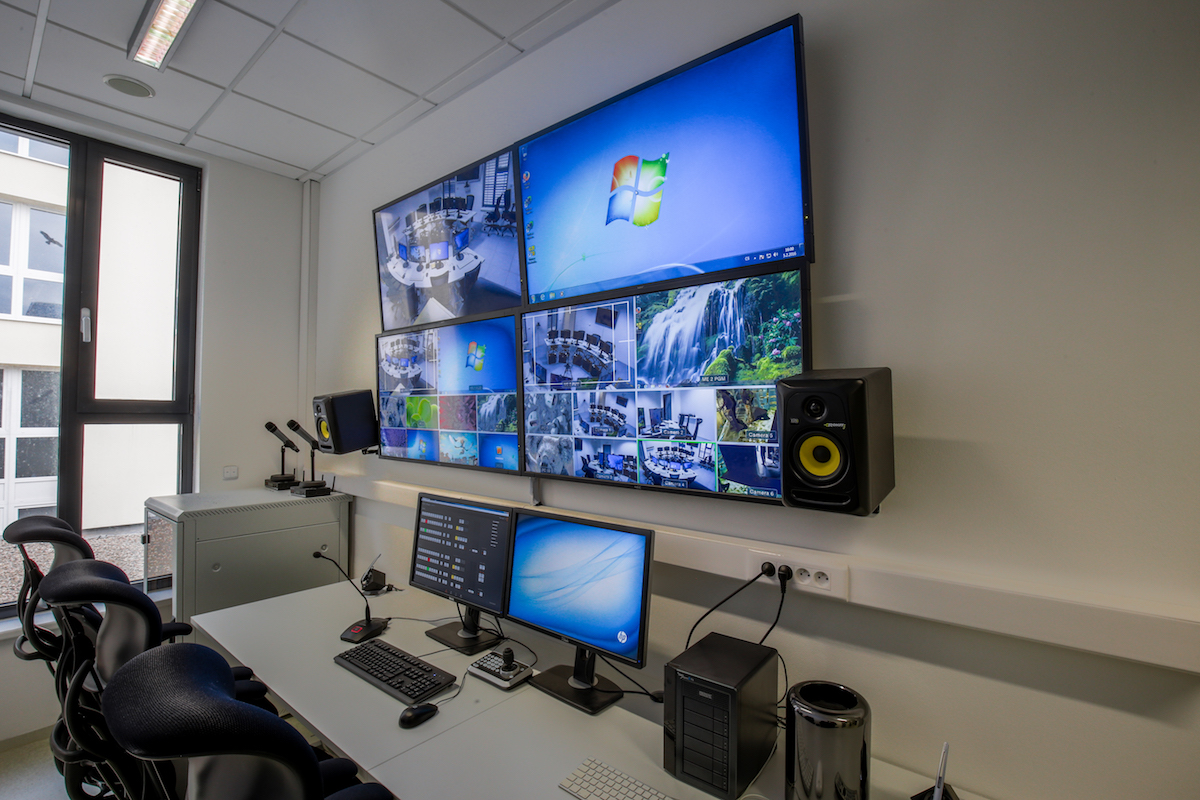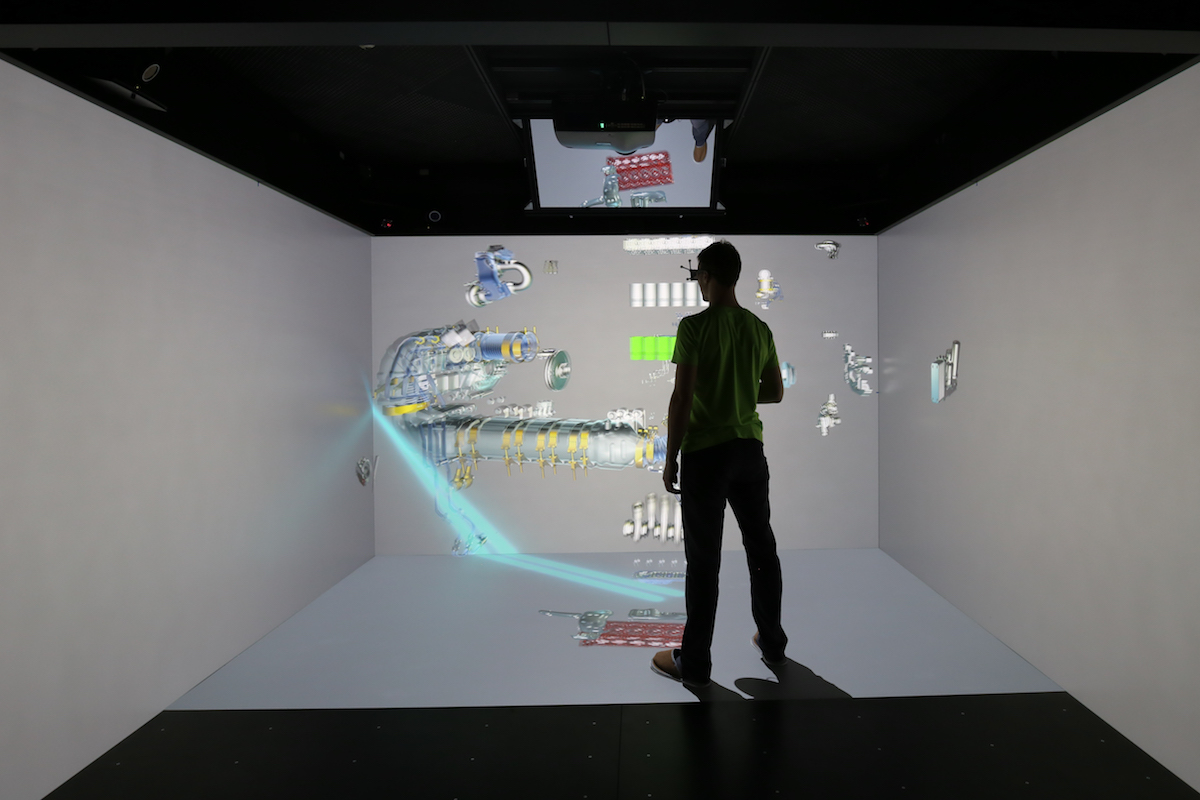The Department of Information Technology, Faculty of Economics and Business Administration, ČZU in Prague guarantees a number of specialized laboratories, which serves as a modern facility for teaching, research, and student projects. Thanks to this infrastructure, students and academics can work with the latest technologies in areas such as cybersecurity, computer networks, data analytics, and software development.
LABORATORY FOR THE STUDY OF HUMAN BEHAVIOR / HUMAN BEHAVIOR RESEARCH UNIT (HUBRU)
The Faculty of Business Administration has a Usability Laboratory and a Virtual Reality Laboratory within the HUBRU (Human Behavior Research Unit) workplace. These laboratories enable the use of a wide range of research methods and the effective collection of qualitative and quantitative data for various types of research. In addition to several units for measuring Eye Tracking (Tobii), the Usability Laboratory is also equipped with a range of sets for measuring other biometric data of participants, including EEG, pulse, skin conductance (GSR), etc.
In addition to its own measuring equipment, the laboratory is also equipped with technology that allows for full-scale recording of events in the room using several cameras and microphones, enabling not only the acquisition of a wide range of recordings for further analysis, but also the implementation of interaction with the participant during research in which the presence of the researcher could be disruptive.
A specific feature of the laboratory's potential use is collaborative testing, which focuses on testing complex products or systems, as well as entire processes implemented in digital systems, and evaluating the display of the state of these processes at individual user levels, up to ten workstations. This method is characterized by active interaction between testing participants, often with the aim of gaining deeper insight into the thought processes, expectations, and problems of users within the tested system.
Equipment specifically Tobii Pro Nano
A powerful mid-range eye tracker with two cameras capturing eye tracking data at 60 Hz. The Nano is a small and portable eye tracker that can be used for studies on laptops, monitors up to 24ʺ (16:9), mobile devices (using the mobile test accessory), real-world interfaces, projections, simulators, and television screens. It is designed for portability, versatility, and ease of use.
GSR sensor
A device that measures skin conductivity through sweat on human limbs (palms, feet). The more emotionally aroused we are, the more the activity of the sweat glands increases, which in turn increases the skin conductivity. All this happens completely unconsciously, regardless of whether we are nervous, confused or surprised. This device can therefore monitor the emotional changes of the user.
Wireless EEG DSI-24
Wearable Sensing's DSI-24 system is the leading dry electrode EEG system in terms of signal quality and comfort. The device is equipped with sensors that provide full head coverage with 19 electrodes on the head, 2 sensors on the ear clips and also has 3 built-in auxiliary inputs for sensing up to 3 auxiliary sensors. It also has an 8-bit trigger input for synchronization with other devices such as Eye-Tracking, Motion (IMU), GSR and more.
Tobii Glasses Pro (Eye Tracker)
Advanced portable eye tracking device in real-world environments (outside the laboratory).
BSS - BiSigma Software Suite
Analytical tool for comprehensive evaluation of various biometric data.
BeRecorder
Software that allows you to record desktop computers in combination with biometric data.
ARTIFICIAL INTELLIGENCE AND BIG DATA PROCESSING LABORATORY - PEF E341
- Artificial Intelligence
- Big data processing
- Application testing
The laboratory for big data processing offers modern scale out solutions for storing and processing a large amount of data obtained from data warehouses or sensors from various application areas (DPZ data, social networks, environmental data, meteorological data, economic data, etc.). HW and SW for data storage with more than 100 TB of clean data space, their processing and management of the entire system is located in a separate air-conditioned room. The entire system is able to ensure extreme performance and high availability. SW solution over the entire system for big data analysis enables not only data collection, but very advanced data analysis and their presentation, such as multispectral and hyperspectral data analysis, Linked Open Data, temporal data, texts, satellite and aerial images, sensor data management , data from machines, company data, 2D and 3D visualization, time series visualization, data reporting, etc. The system can be accessed from 7+1 powerful four-processor workstations with specialized SW, which are located in the PEF E341 laboratory.
In addition, specialized SW is installed on these workstations for:
- for numerical calculations and simulation of neural networks (MatLab and Simulink including application libraries),
- universal automated testing of desktop, web, mobile and hybrid applications (Ranorex Studio).
The laboratory's professional guarantee is provided by the Department of Information Technologies in cooperation with the Department of Systems Engineering, the Department of Information Engineering and the Department of Statistics.
Technical operation is provided by the Information Services Center.
Head of the laboratory:Ing. Jan Masner, Ph.D
ARTIFICIAL INTELLIGENCE AND BIG DATA PROCESSING LABORATORY - PEF E333
- GIS Laboratory
- IoT lab
The GIS laboratory enables monitoring, analysis and processing of data in the field of agriculture and the environment, with a focus on the areas of precision agriculture and support for decision-making, design and analysis of measures aimed at streamlining production and environmental protection, including analysis of the long-term development of soil conditions and water management conditions
The laboratory contains a powerful GIS server, seven workstations and the necessary GIS SW, and many additional devices in the form of a large-area digitizer, a large-area A0 scanner, an A0 plotter or hand-held, very accurate GPS mapping devices. Thanks to data in the form of infrastructure maps, administrative units, hydrological maps, land cover maps, elevation maps or digital relief, the implemented GIS solution enables not only the central management of a geographic database, but also, for example, geographic analyzes and processes, the running of interactive web applications or working with map data in the form WPS or publish services in the form of WPS, WCS, WMS and WFS. Additional data for the GIS laboratory is being prepared from the section focused on big data analysis.
The laboratory's equipment also enables the collection of real data for the artificial intelligence laboratory and for the processing of big data and also has single-board computers with accessories, outdoor autonomous and non-autonomous sensors (temperature, pressure, humidity, gyroscopes, etc.), IoT kits for Smart Farming (Libelium Smart Agriculture IoT Vertical Kit), IoT gateways, routers, switches, a top 3D printer (Ultimaker 3) and a soldering station. The laboratory for IoT thus enables both the real deployment of the aforementioned Smart Farming kits, as well as the production and implementation of sensor parts directly according to specific needs.
The IoT laboratory is used for the installation, operation and development of sensor prototypes used to obtain large amounts of data from various sources. These mainly include the following groups of technical equipment: autonomous sensors and systems for IoT networks; components for prototyping IoT devices; wearable electronics; network elements for IoT; mobile devices and components; tools and materials for the production of components and accessories for IoT. The laboratory also offers a training course for students, where they learn to use IoT technologies in practice, especially in the areas of agriculture, the environment, human health and industry.
The laboratory's professional guarantee is provided by the Department of Information Technologies in cooperation with the Department of Systems Engineering, the Department of Information Engineering and the Department of Statistics.
Technical operation is provided by the Information Services Center.
Head of the laboratory: Ing. Michal Stočes, Ph.D.




